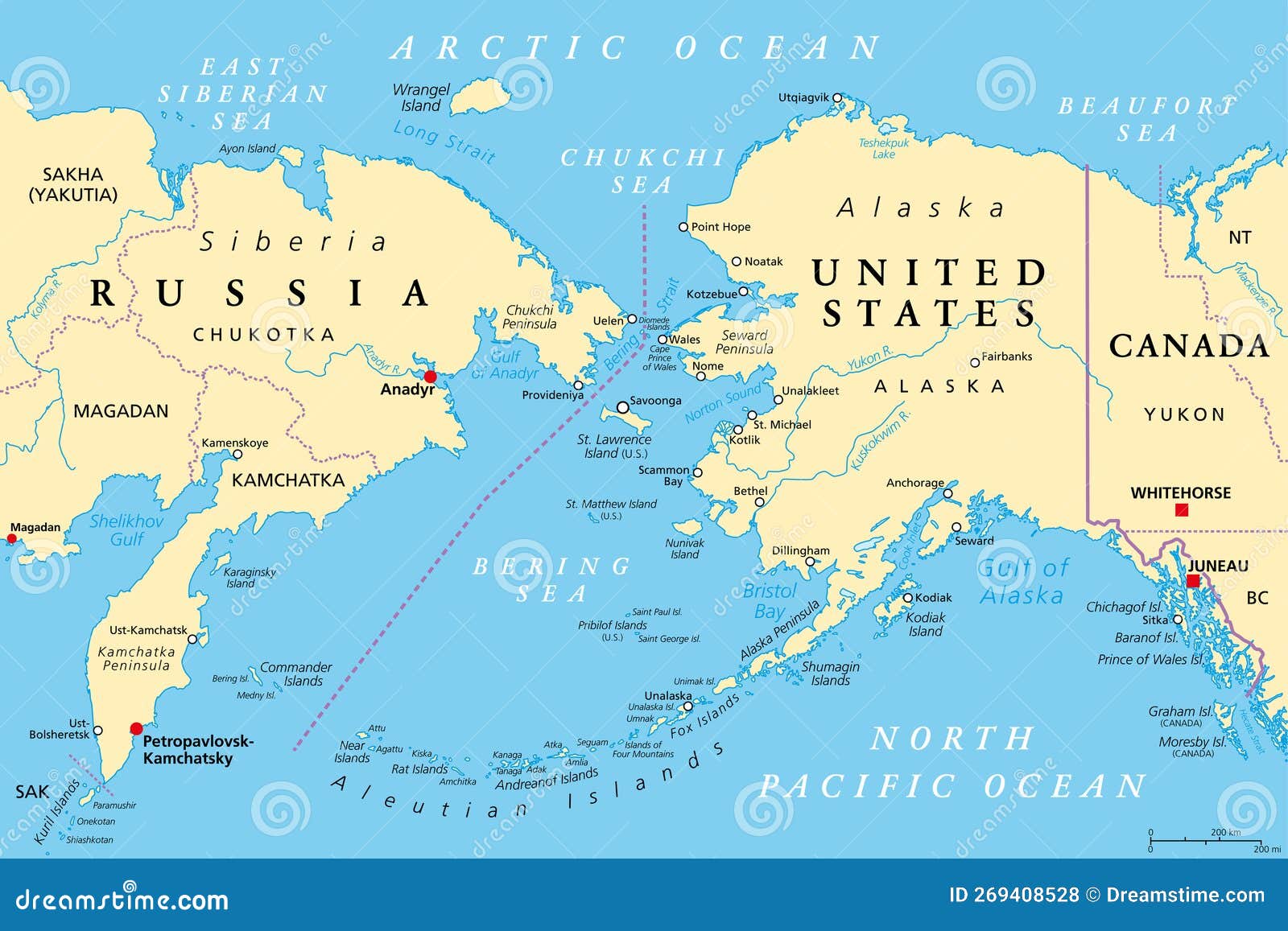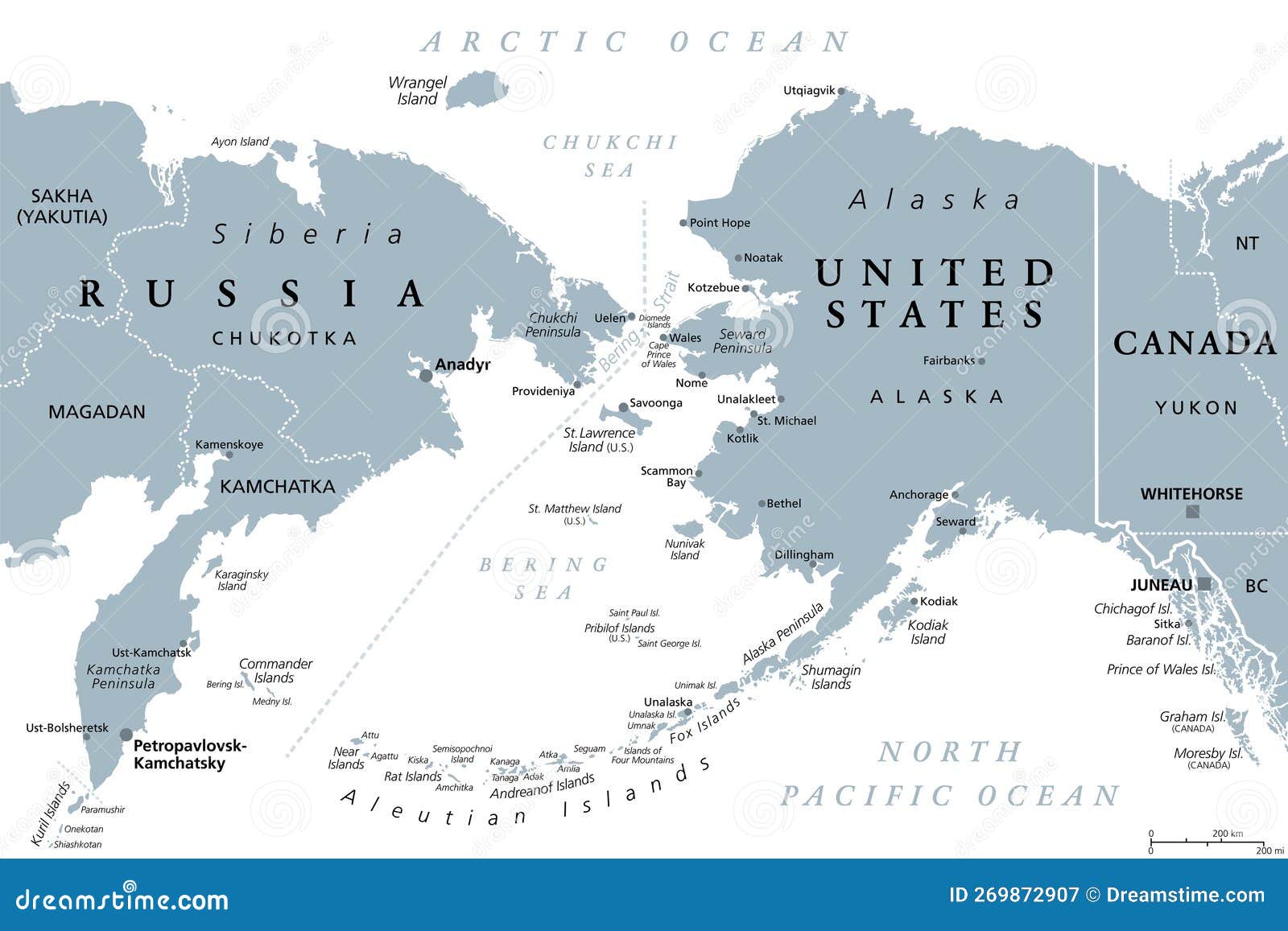How Far Apart Is Alaska And Russia? Unveiling The Surprising Distance Between Two Giants
Ever wondered how close Alaska and Russia actually are? It’s one of those geographical facts that might blow your mind if you haven’t heard it before. Picture this: two massive countries separated by a mere stretch of water so narrow that, on a clear day, you could almost wave hello to the other side. That’s right, Alaska and Russia are closer than you think!
Now, let’s get into the nitty-gritty of this fascinating geographical relationship. The distance between Alaska and Russia isn’t just a random fact; it’s a story of history, politics, and nature working together in ways you wouldn’t expect. As we dive deeper, you’ll discover how this proximity affects everything from wildlife migration to geopolitical tensions.
So, buckle up because we’re about to take you on a journey across the Bering Strait, where two continents meet in the most unexpected way. Whether you’re a geography enthusiast or just someone curious about the world, this article has something for everyone. Let’s start by answering the burning question: how far apart is Alaska and Russia?
Understanding the Geographic Context
First things first, let’s set the stage. Alaska is the largest state in the United States, while Russia is the largest country in the world. Both are giants in their own right, but what makes their relationship unique is the Bering Strait, a narrow waterway that separates them. This strait is like the world’s smallest divide between two massive landmasses.
The Bering Strait: A Natural Boundary
The Bering Strait is the main player in this story. It’s only about 55 miles wide at its narrowest point, which might seem like a lot, but in the grand scheme of things, it’s surprisingly small. This strait has been around for thousands of years, acting as both a bridge and a barrier between the two continents.
- The Bering Strait connects the Pacific Ocean to the Arctic Ocean.
- It’s named after Vitus Bering, a Danish explorer who worked for the Russian Navy.
- During the Ice Age, this area was actually dry land, forming a land bridge that allowed humans and animals to migrate from Asia to North America.
Exact Distance Between Alaska and Russia
Now, let’s talk numbers. The shortest distance between Alaska and Russia is approximately 55 miles (88 kilometers). This measurement is taken between the Diomede Islands, which straddle the international date line in the middle of the Bering Strait. On one side, you’ve got Big Diomede, which belongs to Russia, and on the other, Little Diomede, which is part of Alaska.
- Best Way To Watch Telugu Movies Online 20232025 Guide
- Movierulz Kannada Movies Find Legal Streaming Options More
Diomede Islands: The Heart of the Divide
The Diomede Islands are often referred to as the “Islands of the Four Days.” Why? Because Big Diomede is in the Eastern Hemisphere, while Little Diomede is in the Western Hemisphere. This means that when it’s Monday on one island, it’s Sunday on the other. Talk about a time-travel experience!
- Big Diomede (Russian territory) is located on the Asian side of the date line.
- Little Diomede (American territory) is located on the North American side of the date line.
- These islands are so close that, on a clear day, you can see one from the other.
Historical Significance of the Divide
The relationship between Alaska and Russia isn’t just about geography; it’s deeply rooted in history. Back in the day, Russia owned Alaska until it sold it to the United States in 1867 for a mere $7.2 million. This transaction, known as the Alaska Purchase, changed the course of history for both nations.
The Alaska Purchase: A Game-Changing Deal
When the U.S. bought Alaska, many people thought it was a waste of money. They called it “Seward’s Folly,” after William Seward, the Secretary of State who negotiated the deal. But fast forward to today, and Alaska is a treasure trove of natural resources, from oil to gold. Who’s laughing now?
- The Alaska Purchase doubled the size of the United States.
- It also marked the end of Russian influence in North America.
- Today, Alaska is a key player in U.S. politics and economics.
Geopolitical Implications
With such a close proximity, it’s no surprise that Alaska and Russia have had their share of geopolitical tensions over the years. From the Cold War to modern-day diplomacy, this divide has been a hot topic in international relations.
The Cold War Era: A Time of Tension
During the Cold War, the Bering Strait became a symbol of the divide between the U.S. and the Soviet Union. Both sides kept a close eye on each other, with military installations and surveillance systems in place. It was a tense time, but it also highlighted the importance of this narrow stretch of water.
- The U.S. and Soviet Union both had military bases near the Bering Strait.
- There were strict restrictions on travel between the two sides.
- Even today, the strait remains a point of interest in global politics.
Environmental Impact
But it’s not all about politics and history. The Bering Strait is also home to some of the most incredible wildlife on the planet. From migrating whales to polar bears, this region is a haven for nature lovers. The proximity of Alaska and Russia plays a big role in the movement of these animals.
Wildlife Migration: A Natural Phenomenon
Every year, millions of animals make the journey across the Bering Strait. Birds, fish, and even marine mammals rely on this route for survival. It’s a testament to the power of nature and the interconnectedness of our world.
- Gray whales migrate from the Bering Sea to the Pacific Ocean every year.
- Polar bears and walruses are often spotted near the strait.
- Thousands of bird species use the strait as a flyway during migration.
Climate Change and the Bering Strait
As the world grapples with climate change, the Bering Strait is feeling the effects more than ever. Rising temperatures are causing the ice to melt, which has both positive and negative consequences for the region.
The Melting Ice: A Double-Edged Sword
On one hand, melting ice is opening up new shipping routes and opportunities for resource extraction. On the other hand, it’s threatening the delicate ecosystem that exists in the strait. It’s a balancing act that scientists and policymakers are trying to navigate.
- New shipping routes are being explored in the Arctic.
- Oil and gas companies are eyeing the region for potential drilling.
- Environmentalists are sounding the alarm about the impact on wildlife.
Traveling Between Alaska and Russia
If you’re thinking about making the trip from Alaska to Russia or vice versa, you might be surprised to learn that it’s not as simple as hopping on a boat. There are strict regulations and permits required for travel between the two countries.
How to Make the Journey
While it’s technically possible to travel between Alaska and Russia, it’s not something you can do on a whim. You’ll need to plan ahead and make sure you have all the necessary paperwork in order. But if you’re up for the adventure, it’s definitely worth it!
- You’ll need a visa to enter Russia from Alaska.
- There are tour operators that specialize in Bering Strait crossings.
- Be prepared for unpredictable weather and sea conditions.
Cultural Connections
Despite the political and geographical divide, Alaska and Russia share a rich cultural history. From indigenous communities to modern-day exchanges, the two regions have more in common than you might think.
Indigenous Peoples: Bridging the Gap
Before the U.S. and Russia became involved, the Bering Strait was home to indigenous peoples who traveled freely between the two continents. Today, these communities continue to thrive, preserving their traditions and way of life.
- Inuit and Yupik communities live on both sides of the strait.
- They share similar languages, customs, and traditions.
- Efforts are being made to strengthen cultural ties across the divide.
Future Prospects
As the world continues to evolve, the relationship between Alaska and Russia will undoubtedly change as well. Whether it’s through trade, diplomacy, or environmental cooperation, the two regions have the potential to work together in ways that benefit both sides.
A Look Ahead
What does the future hold for Alaska and Russia? Only time will tell, but one thing is for sure: their proximity will always make them neighbors, whether they like it or not.
- There’s potential for increased trade and economic partnerships.
- Environmental cooperation could play a key role in preserving the region.
- Technological advancements may make travel between the two sides easier.
Conclusion
So, there you have it! The distance between Alaska and Russia might be small in terms of miles, but it’s huge in terms of history, culture, and significance. From the Bering Strait to the Diomede Islands, this region is a fascinating example of how geography shapes our world.
Now that you know how far apart Alaska and Russia are, why not share this article with your friends? Or better yet, leave a comment below and let us know what you think. Who knows, maybe one day you’ll find yourself standing on one side of the strait, waving hello to the other!
Table of Contents:
Article Recommendations
- Kannada Movies 2025 News Updates Where To Watch Online
- Kannada Movies 2024 Streaming 4movierulz Whats New



Detail Author:
- Name : Noemy Konopelski
- Username : gkilback
- Email : waters.sid@yahoo.com
- Birthdate : 2005-07-21
- Address : 962 Considine Point Apt. 847 Lake Grant, CA 58865-3809
- Phone : 239.364.9587
- Company : Jast-Hagenes
- Job : Streetcar Operator
- Bio : Fuga alias sed rerum qui eligendi voluptate. Ea asperiores atque tempora sunt nam odit. Ratione consequuntur praesentium totam est. Minus deserunt reprehenderit sed nihil vero.
Socials
facebook:
- url : https://facebook.com/hand2000
- username : hand2000
- bio : Asperiores eveniet exercitationem quisquam voluptate.
- followers : 5236
- following : 1852
instagram:
- url : https://instagram.com/brandohand
- username : brandohand
- bio : Ratione nisi cum exercitationem distinctio aperiam. Quia et error debitis quis.
- followers : 4236
- following : 2145
tiktok:
- url : https://tiktok.com/@brando.hand
- username : brando.hand
- bio : In illum eius libero id illo.
- followers : 1740
- following : 1260